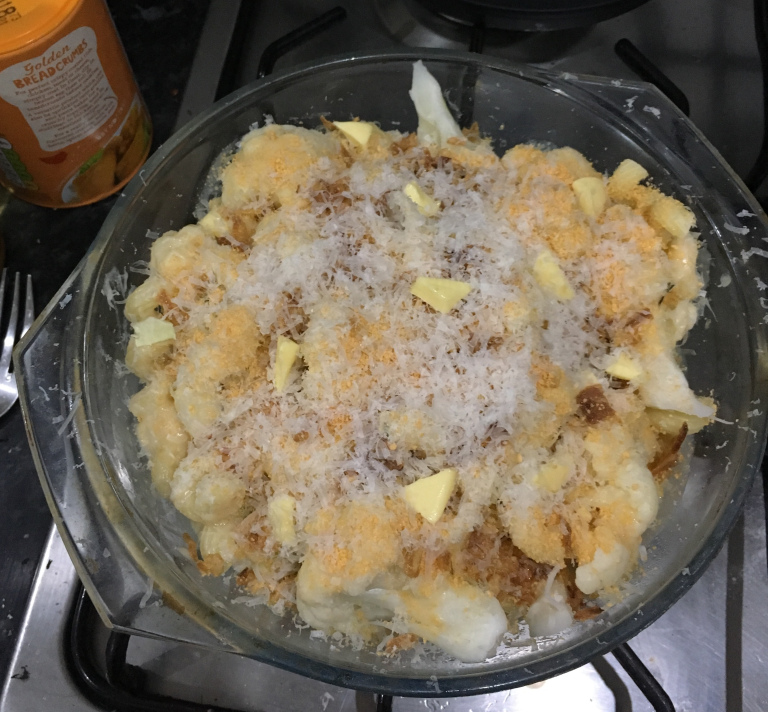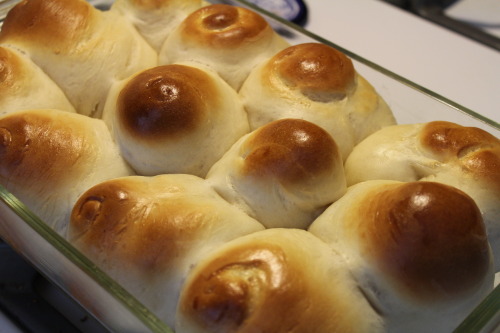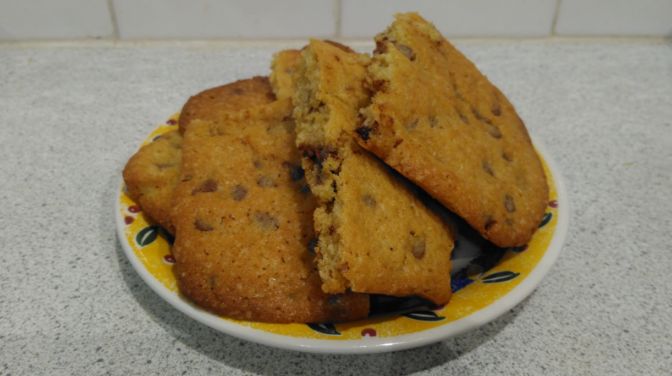The chefs making Stardew Valley's recipes real
Anyone want to try a Strange Bun?


During Food Week on PC Gamer, we looked at all the interesting ways games and grub intersect.
Food in games usually just gives you a buff or maybe health regeneration, but designers still work hard to make it look appetizing. Stardew Valley might not be Final Fantasy XV in terms of hyper-realistic meals, but its pixel treats are nonetheless tempting. If you’ve ever wanted to tuck into a Farmer’s Lunch or a Miner’s Treat then Everett and Helena, of Stardew Valley Recipes and Stardew Kitchen respectively, have got you covered.
Stardew Valley’s food is abstract: you transform a few disparate ingredients into fully fledged meals as if by alchemy. Everett and Helena use these in-game recipes as a foundation, take the spirit of each dish and then turn it into something you can actually eat. Helena’s recent Cheese Cauliflower is a good example: in-game, Pam provides a "recipe" that only asks you to combine a single cauliflower and a block of cheese. Helena created a full dish including pasta, breadcrumb topping, and a beer-based sauce (in tribute to Pam, who loves Pale Ale.)

Everett’s been working on creating these recipes for almost two years, and has covered almost all the game’s food, including a few bonuses that are referenced but that you can’t actually make. "I was working on the Sous Chef achievement [to cook 25 food items], and I realized that all the recipes in-game seemed doable in real life," he tells me. "I’ve never had any professional experience with cooking at all; everything I know is from my parents, grandparents, and YouTube videos, but I wanted to give it a shot."
I've heard fiddleheads contain carcinogens if you don't cook them properly, but the adrenaline of avoiding getting poisoned is part of the appeal of foraging, I think.
Helena
Helena’s blog began several weeks ago, and she too describes herself as "a dedicated but decidedly amateur cook." The two take different approaches in their descriptions—Helena’s instructions are more narrative, often conversational and jokey, but both are entertaining and easy to follow.
Cooking blogs inspired by games aren’t new—Helena cites the now-defunct Gourmet Gaming as one of her inspirations—but Stardew Valley is a particularly good fit for the genre. Its focus on wholesome living, locally sourced ingredients, and food as a community project (through characters who share recipes with you and events like the pot luck) all translate well into the blog projects.

For Everett, the community that’s sprung up around the blog has become a large part of his enjoyment. He invites people who have tried his recipes to submit pictures and tells me that he loves to "hear tips and suggestions from a whole crowd of people."
Helena is particularly looking forward to foraging for her food: "I think it's much easier to get excited about eating something fairly unglamourous like chard or a swede if you've actually come into contact with the earth it was growing in and worked to have it be something you can enjoy," she explains, enthusing about the potential of finding fiddlehead ferns in the wild. Then she adds, as something of an afterthought, "I've heard fiddleheads contain carcinogens if you don't cook them properly, but the adrenaline of avoiding getting poisoned is part of the appeal of foraging, I think." (Sourcing wild food is indeed much more complex and potentially dangerous in real life than in Stardew Valley—it’s probably best to leave this to those with experience, like Helena, who used to work on a farm.)
Keep up to date with the most important stories and the best deals, as picked by the PC Gamer team.
Potential poisoning aside, Stardew’s ingredients have caused other hurdles. "Some of the recipes have vague or weird ingredients in the game, like Pale Broth [made with just two White Algae] and Strange Bun [Wheat Flour, a Periwinkle, and Void Mayonnaise]," Everett explains. For those recipes, he’s stuck with the spirit rather than the game’s instructions, creating a Turkish-style yoghurt soup and a snail-stuffed bread.

Helena hasn’t quite decided how she’s going to approach those yet: "I think I’m going to try to keep each dish as true as I can to either the ingredients or the appearance and it’ll probably have to be the latter on those two… I'm pretty sure I could get away with treating the Void Mayonnaise in the Strange Bun as a kind of custard and coloring it with that activated charcoal that seems to be a super trendy ingredient at the moment, though God knows what I'd do with the rest of the charcoal and there's still the periwinkle to think about."
Everett suggested a handful of his recipes, all of which sounded very healthy and wholesome except for cookies. Which I chose.
But even standard ingredients can be tricky. Everett described his issues sourcing seafood: "I live in a tiny town in the middle of nowhere and far from the ocean," he says, and Helena has her own reservations. "I do try to keep loosely kosher so all the shellfish recipes are going to be a challenge… Although the only kosher rule I really stick to is avoiding pork."
Nonetheless, she’s looking forward to experimenting. "I'm optimistic that [recipes I’m nervous about] will turn out better than I expected and raise my confidence with that kind of thing in future," she says. She also laid out her goals for the blog, including her desire to keep her food "unpolished" so that "people can see what I'm doing and think 'hey, I could do that!'… I want to make it clear you don't need any real training or special facilities or equipment to derive joy and pride from making food and trying new things in the kitchen."

With that in mind I, something of a kitchen disaster, decided to get stuck in. Everett suggested a handful of his recipes, all of which sounded very healthy and wholesome except for cookies. Which I chose.
In-game, cookies are made from just three ingredients—Wheat Flour, Sugar, and an Egg. Everett’s recipe is, thankfully, not much more complex. He categorizes his recipes by difficulty (cookies are 'easy') as well as other factors like whether or not they’re vegetarian so that people can find food that suits them.
My hour or so of baking was lovely, though definitely closer to Helena’s self-described "busy person cooking to unwind after work or when they have time at the weekend" style rather than Everett’s beautiful presentation. In other words, the cookies I made tasted extremely good, but they weren’t especially pretty. I severely underestimated the amount they would spread during cooking, and came away with a slab rather than individual bites, but that was on me rather than Everett. Besides, it was nothing that couldn’t be fixed by taking a knife to it, tray-bake style.

"Since Stardew Valley is my favorite game, being able to create content from it has been extra enjoyable," Everett says, and having baked his cookies, I can see why. There’s an appeal to taking something from a game and making it physical. We do it with merch, hobby crafts, and cosplay.
But everything’s better with food involved, and the fact that Stardew Valley makes food an important part of its warm and welcoming environment means bringing that food into our own lives—no matter how clumsily—can bring that same feeling with it. In sharing their expertise, Helena and Everett have made that possible for even the most inexperienced cooks.
This article was originally published February 2018.

